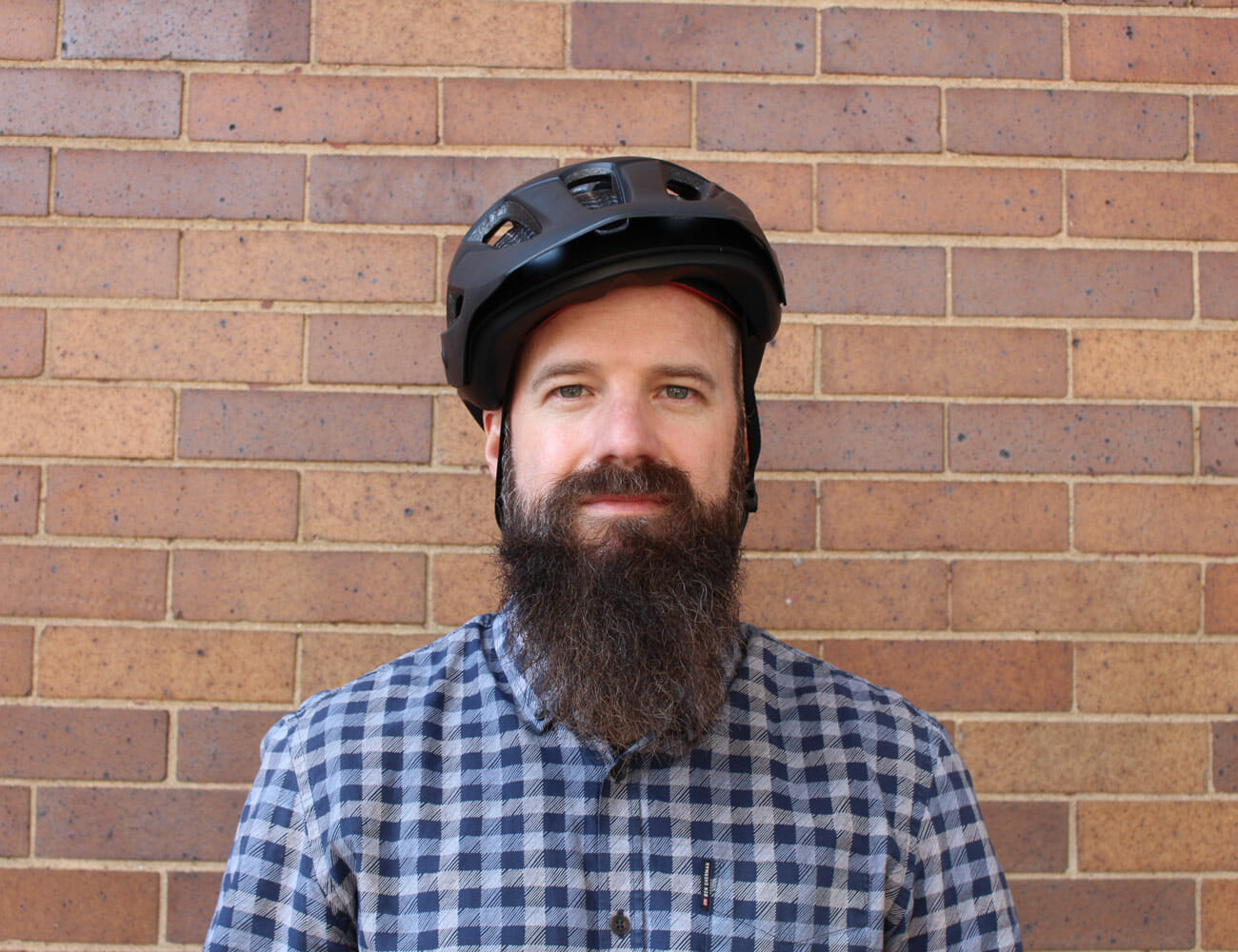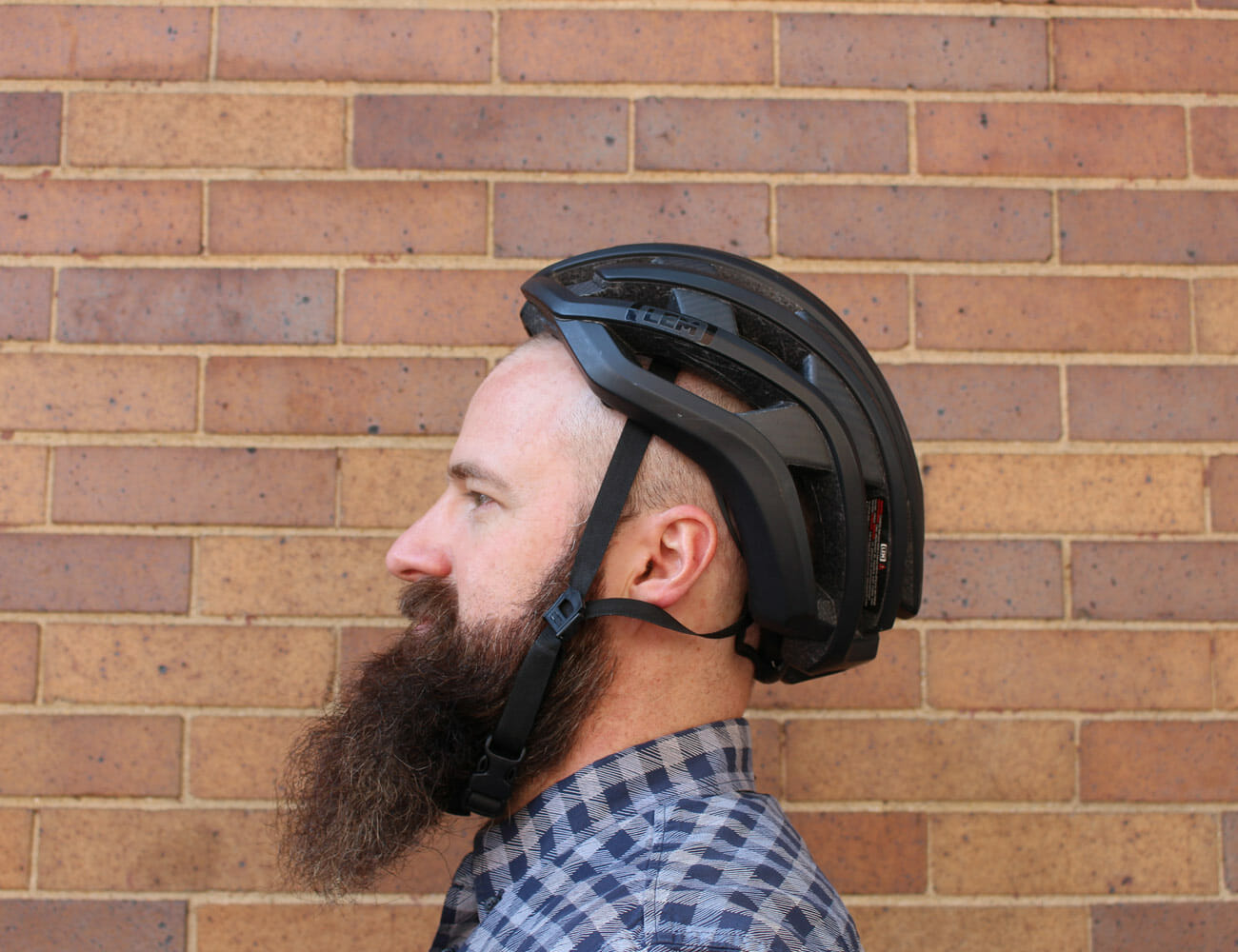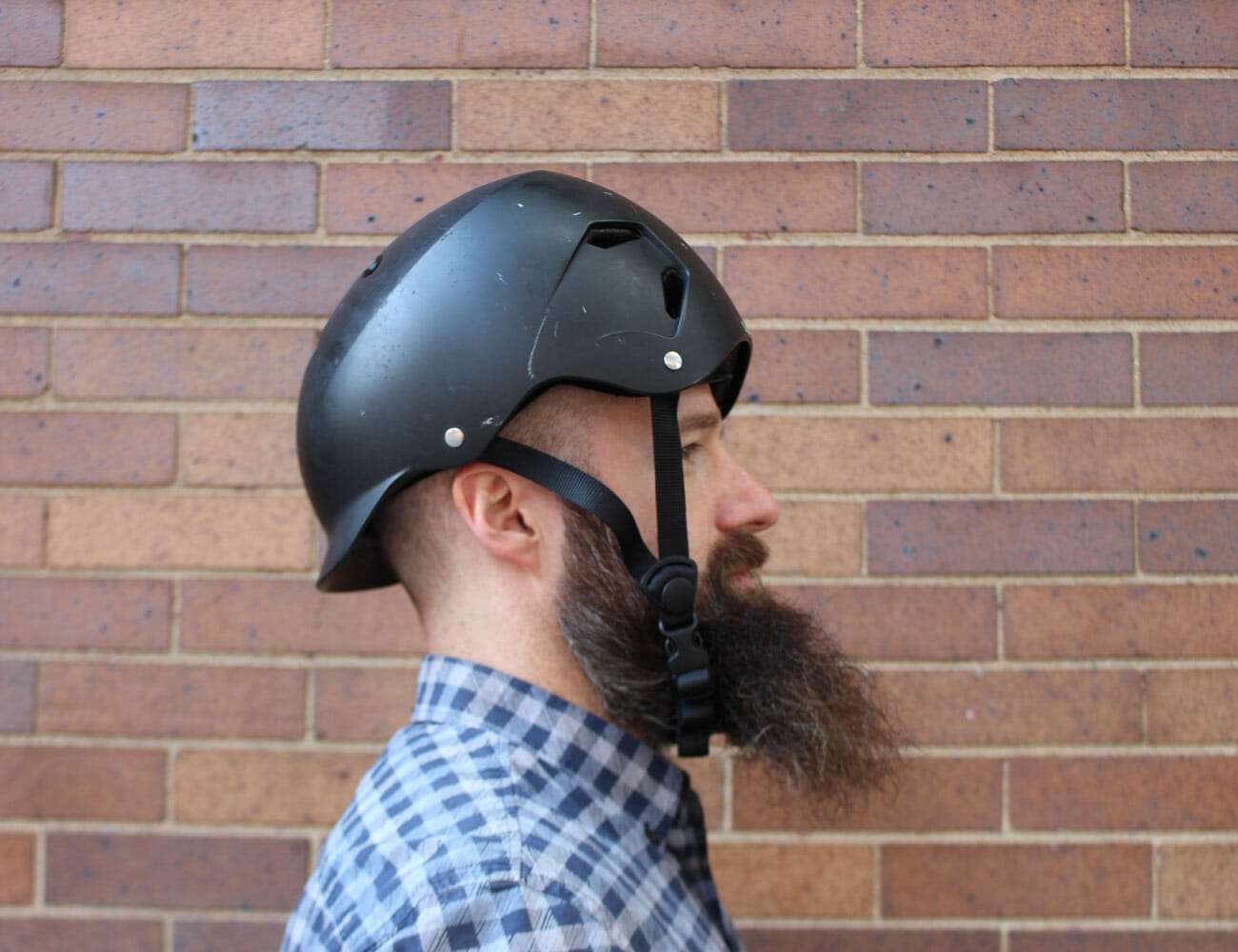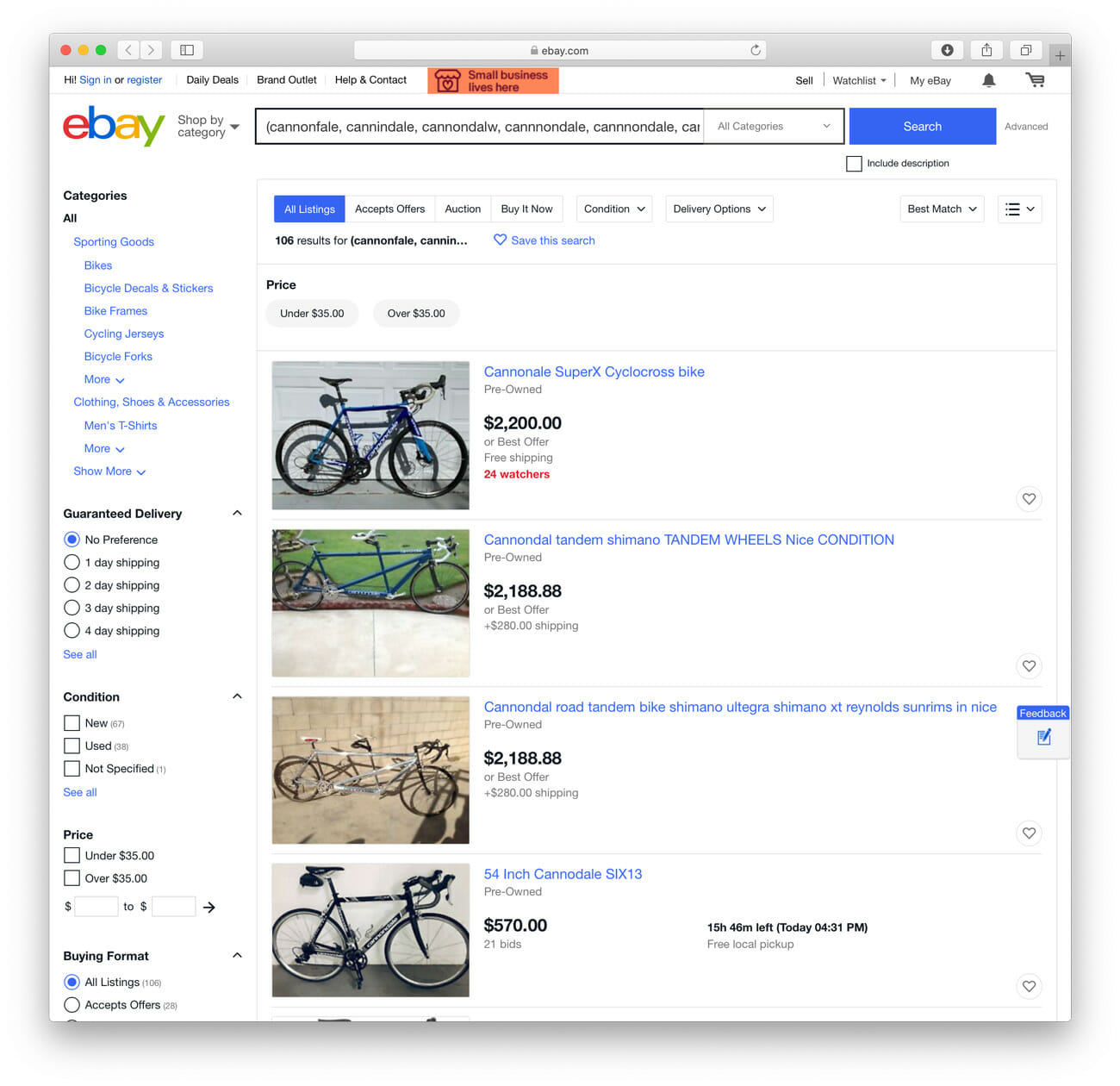It happened again. I was flying south down the Hudson River Greenway when I spotted another cyclist pedaling north and noticed something seemed… different. What an interesting-looking helmet, I thought, I wonder who makes that? Only after I passed her and was out of shouting reach did it hit me. It was a perfectly normal helmet, except for the fact that she was wearing it… freakin’… backwards.
I wish this was an isolated incident. But this exact scenario has played out before, a recurring nightmare that drives me insane. While that particular helmet fail is less common than a couple others, I have seen them all so many times it hurts. I’m always tempted to say something, but in this city, I figure the last thing a person on a pleasant afternoon ride wants is some bearded, tattooed asshole yelling (well-intentioned) advice at them.
And yet, I’ve come to realize my silence isn’t doing these people any favors, because even worse than making you look like a fool, wearing your helmet incorrectly pretty much defeats the purpose of having one at all.
“Helmets are tested assuming that all the recommendations for wearing one have been followed,” explains Gloria Hwang, CEO and founder of Thousand. “A helmet that does not fit properly or is worn incorrectly will affect the helmet’s safety and may not offer its full safety capacity in a fall or crash.”
Hwang should know. After losing a friend to a bike accident, she launched Thousand on Kickstarter in 2015 with the goal of helping to save a thousand lives with helmets that are as stylish as they are safe, and based on proliferation of Thousands on the streets, she’s making headway.
But no matter what brand you choose, you’ve gotta wear that thing right. So what follows are a look at the biggest helmet issues I’ve encountered over a decade wheeling around the streets of New York, followed by some pro tips that’ll make your noggin safer than it’s ever been.
The Most Common Bike Helmet Fails
Fail 1: The T.I.


The Atlanta impresario’s ability to balance epically slanted caps on his dome is legendary. But wearing a bike helmet this way, usually because it’s too big or the straps haven’t been adjusted properly, compromises the safety and increases the odds of the helmet coming loose in a crash.
Fail 2: The James Dean


Tipping your lid waaay back may work for Hollywood cowboys, but not so much for urban cyclists. First of all, you look silly, as any skier or snowboarder familiar with gaper gap can tell you. But much worse, your entire forehead and face are exposed if you fall.
Fail 3: The Fred Durst


Sorry to remind you of Limp Bizkit, but somehow the rap rock frontman is the first person who comes to mind when I picture flipped lids. They looked about as cool on Mr. Durst as that creepy soul patch. Same for you with a backwards bike helmet, which is just… so upsetting.
How to Find a Helmet That Fits and Wear It Properly


1. Get Your Size Right
“Start by measuring your head’s circumference and confirming your head size fits within the helmet’s size range,” advises Jeremiah Boobar, director of Suspension and Parts and Accessories at Cannondale. These measurements are almost always in centimeters, so a metric tape measure will do the trick. When actually trying on helmets, says Hwang: “Make sure it fits just right. Not too small (tight and hurts to wear) and not too big (wiggles everywhere).”
2. Dial in the Fit
Hwang notes that Thousand’s helmets come with a dial-fit system to allow for a custom fit; most reputable brands, including Cannondale, offer a similar feature. “This dial can expand and retract the helmet by up to a half size in either direction, accommodating a wider range of head shapes and sizes,” Hwang explains. That’s particularly handy if your noodle’s like your ski luggage: odd-sized.


3. Fine-Tune the Straps
Once your helmet is dialed in, sort out your straps. “If the helmet is sliding back on your head, it’s not providing the protection it’s designed to in a crash,” says Boobar, referencing the aforementioned James Dean, the most common of all helmet fails. “Position it so the front is about two finger widths from the top of your eyebrows. Adjust the side strap position so the straps form a “V” below and in front of your ear and there’s no slack on the front or back strap. Tighten the chin strap so you can fit two fingers underneath.”
4. Oh and… Make Sure the Damn Thing Is Facing Forward
I get it, if you’re new to helmets, it may be hard to tell. So here are some tips. The size label and the fit dial (if there is one) will be located in the back. If there’s a brim or visor, that’ll be in the front. Still stumped? David Rogers, founder of the cycling blog OurBikeGuide.com, has one last idiot-proof tip: “Hold the helmet level, with the straps pointing toward the ground, and check which end has a higher rise. This is the front and the place that accommodates your face.”
Got it? Good. Now quick, pedal off before I start ranting about saddle heights.




